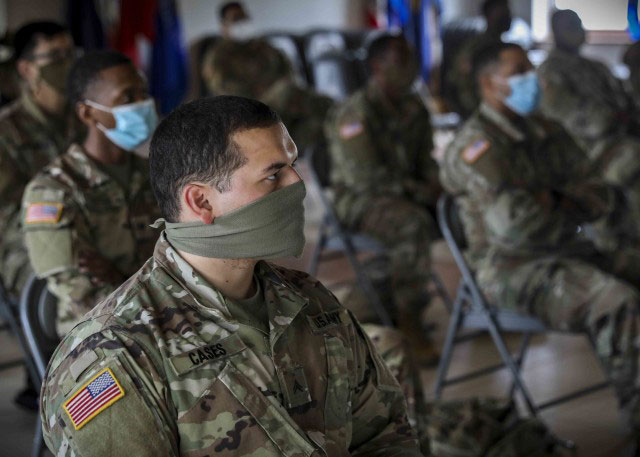USAMRDC Stakes Key Role in Suicide Prevention, Awareness Efforts

In a military where personal health is seen as a key pathway to both individual and organizational success, the topic of suicide prevention continues to receive an increasing amount of attention from U.S. Department of Defense leadership. With the month of September serving as National Suicide Prevention and Awareness Month, the U.S. Army Medical Research and Development Command's Military Operational Medicine Research Program continues their substantial efforts in identifying and developing the types of research required to improve health and well-being at the Service Member level and beyond.
"There is a clear emphasis on this in the DOD," says MOMRP Director Cmdr. Christopher Steele. "And so having a consistent message that we do want additional assistance towards how we approach the problem is important."
Indeed, the MOMRP team serves as the collective touchpoint within the command for myriad suicide prevention and awareness issues; the program most recently tasked with developing the DOD Suicide Prevention Research Strategy document – billed as a tool for identifying funding and investment strategies specific to the study of military suicide – in September 2020. With the launch of a coordinated funding effort this past February designed to identify and prevent high-risk behaviors (including suicide) before they manifest in a more aggressive capacity, MOMRP supports tackling the difficult issue from a public health perspective with a focus on research supporting evidence-based and multi-pronged – or, in internal parlance, "bundled" – approaches.
"Focusing on prevention research from the aspect of 'lethal means safety' is currently a high priority for prevention research," says Dr. Sarah Maggio, Deputy Manager for MOMRP's Psychological Health and Resilience Portfolio. For the sake of perspective, 'lethal means safety' includes such concepts as counseling, safe storage training, and the providing of different options for the safe storage of firearms (i.e. gun locks, the act of storing firearms and ammunition separately, temporary storage locations), as well as lethal means restriction approaches for non-firearm means.
While such safety measures are part of a larger focus area, a multifaceted multi-level upstream approach is necessary. While the intent is to always provide help and support at the Service Member level in a proactive manner, the MOMRP team has received several responses from prospective research partners eager to also engage the immediate people and communities surrounding a given Service Member in order to help buttress key messages.
"It's not just the individual, we want to recruit their family and their social networks and leadership and their unit and the military community as a whole," says Maggio. "We want to recruit that support system as part of a comprehensive, multi-level approach to addressing suicide precipitant factors."
After years of study of the issue – that is, both of suicide as an act and the various external factors surrounding it – have provided benefit in that, according to Steele, more and more researchers and scientists have entered the DOD workforce who both understand the issue and who are intent on dedicating substantial resources to delivering relief. The end result is the construction of newer academic frameworks that expressly address the DOD's concerns and desires to improve outcomes.
"There's two aspects of that kind of effort," says Steele. "One is increased visibility and awareness of research and development opportunities, and the other piece is to build the visibility for actually translating those bright ideas into the actual workforce."
In other words, there is still ground to be gained when it comes to successfully delivering the message to individual Service Members. In this capacity, MOMRP not only relies on its aforementioned "cross-cutting" funding initiative, but also on key partnerships with DOD and Service prevention stakeholders, as well as groups like the Military Suicide Research Consortium, the latter a research program dedicated to expanding the knowledge base on topics such as risk assessment, treatment, and prevention as they pertain to suicidal behavior within the military. The goal is to boost saturation of those key messages.
Such efforts are indeed positive contributions in the effort to reach a singular goal, yet they still remain just the initial steps in a lengthy journey. It is the enduring hope of the MOMRP team – and certainly the larger DOD – that continued headway in this research area will lead to tangible and real-world results.
"Prevention is hard to measure directly, because it is very difficult to measure something that doesn't happen," says Maggio in summation. "But within the research settings, we do see significant results from these various [cross-cutting] approaches and that's promising; and we hope that translates into larger implementation of prevention programming."














